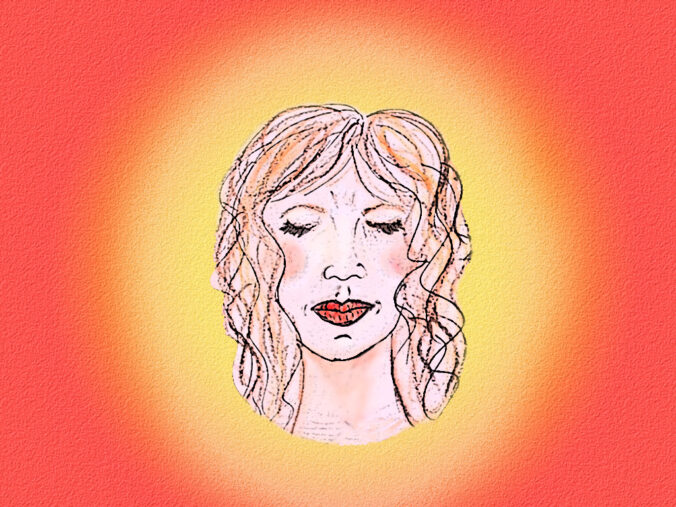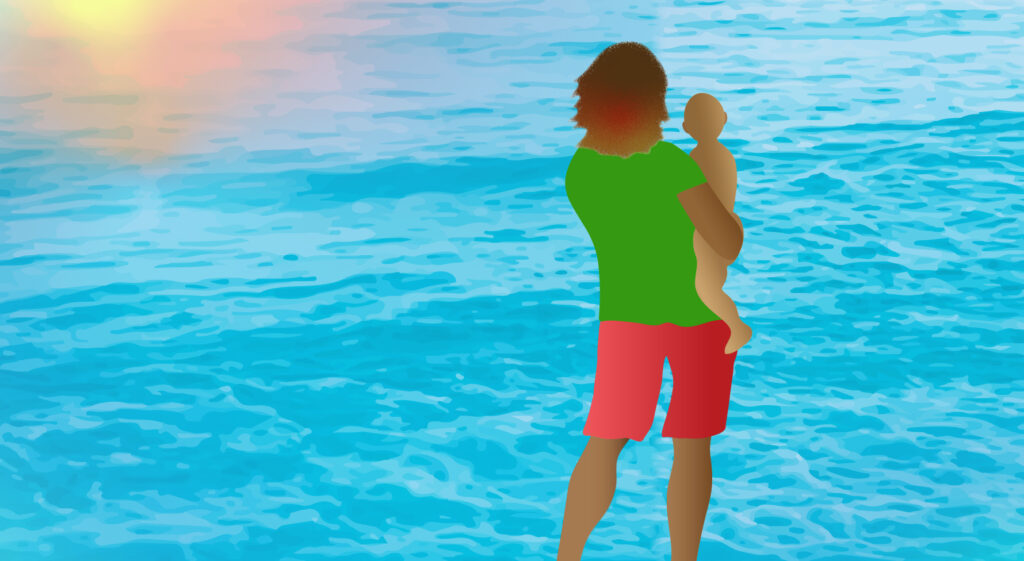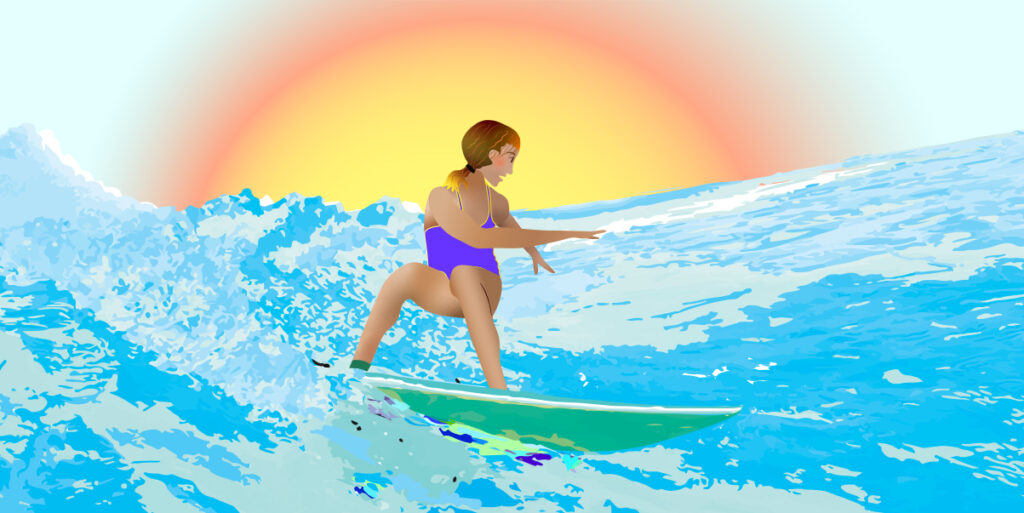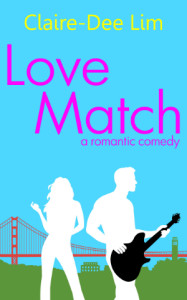Spiritual alchemy has been inspiring me lately as I’ve been thinking about how this ancient philosophy — to transform the soul — applies to a 21st century life.
The Alchemist’s Fool
“I am an alchemist,” he said on their first date. His blue eyes flickering with sincerity.
This might have been a red flag for some women, who would have mentally sorted through excuses for a quick exit. For Cassie, she was used to men making grandiose pronouncements about themselves.
“I am an existentialist,” “I am a nihilist,” or the ever tedious, “I am an atheist.”
But an “alchemist?” she wondered as her eyes drifted around the nearly empty bar. That one was new and it intrigued her.
“Do you turn metal into gold?” she asked.
Alan’s face lit up. “So you know about alchemy.”
She shrugged. “Just the headline.”
“It’s metaphorical rather than literal.”
He pulled up the sleeve of his white linen shirt, revealing on his inner forearm, a tattoo of a green snake coiled around three symbols.
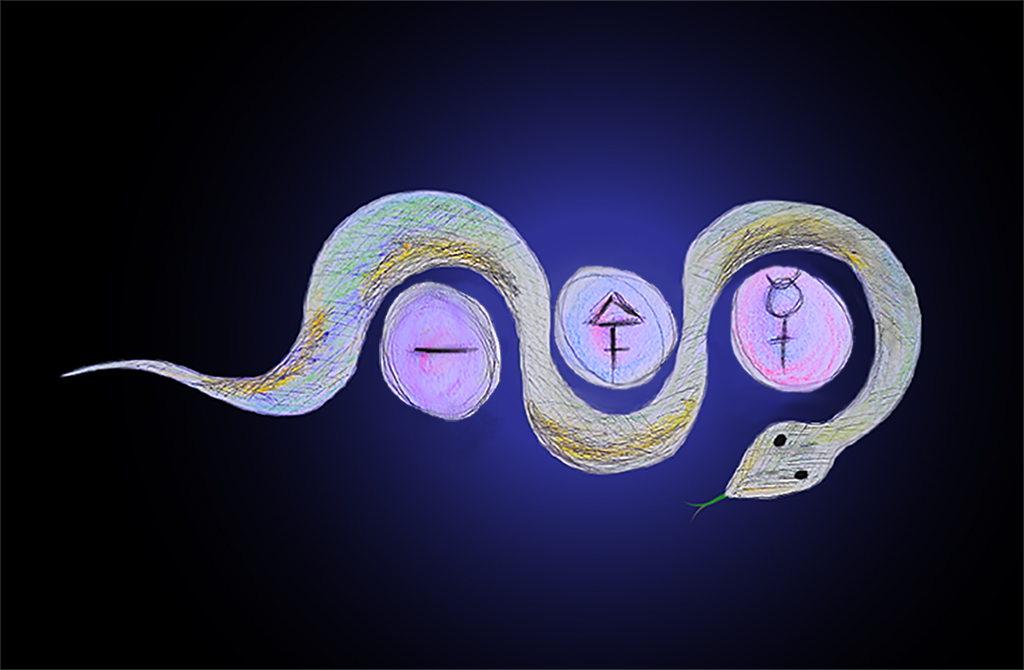
He pointed to them, starting from left to right. “These are the alchemical symbols: salt, sulfur and this one is mercury. They represent the body, spirit, and mind.”
“And the snake means … ?”
“Knowledge … see snakes and serpents have always gotten a bad rap because of Adam and Eve. When symbolically they mean the opposite.”
Cassie studied Alan. He was around forty. His cleft chin, mop of curls, and easy smile, more than made up for the fact that the conversation had turned Biblical.
“As we gain knowledge about ourselves,” he continued, “we can strip away whatever is holding us back, what’s negative within us. We then have the power to create a more authentic and honest life. When that happens — it’s all golden.”
Cassie traced the condensation forming on her beer glass. She couldn’t decide if what he was saying was new-age nonsense or a revelation.
“Ah, so you’re turning yourself into ‘gold’,” she said with a teasing smile. “How’s that working out for you?”
“It’s a process for sure,” he said. “The best part about being a modern alchemist is helping turn others’ lives into gold.”
You do this as a therapist?”
“I do my best.” He drained his glass of sparkling water, lemon wedge tumbling amongst the ice.
He looked around the bar. She followed his eyeline. The happy hour crowd was starting to show up. She became aware of their chairs scrapping across the floor and the rising chatter. He seemed to notice it too.
Alan turned to her and leaned in close. Faint notes of cardamom and leather wafted off him. Cassie found it instantly alluring.
“So what do you think?” he asked. “We could end this now or we can go somewhere else, get dinner and keep talking.”
A rectangular mirror hung on the shiplap wall behind Alan’s shoulder. Cassie took in her reflection, her naturally curly auburn hair, tortured into flat-iron straightness, and light brown eyes, which showed signs of weariness. It occurred to her that she may not have known much about being an alchemist, but she knew what it meant to be a pragmatist and a realist.
For here she was: 35, single and a police helicopter pilot … and she wanted to have a baby. Before this moment, her life had taken an unexpected turn. About a year ago, on patrol over the city, the chopper had malfunctioned and plunged downward. She managed to slow its descent but the crash landing, onto a grassy football field, fractured her pelvis and broke her arm.
During her five months of recovery and arduous physical therapy, she took stock of her life, pinpointing all the areas that needed improvement. Eat better, cut down on stress, learn to meditate, be in nature more … and the big one. Have a baby. She had never thought of being a mother until then. Maybe it was the horrific image of the crash, the ground rushing up to meet her that skipped the needle on the groove of her ordinary life
Once she was back on her feet, and cleared to resume piloting, all the self-improvement promises faded away. Only one lingered — I want a baby. She had to find a mate before her chance of getting pregnant dropped another five percent.
So she formed a plan, and more edicts: no more mindless hook-ups and definitely no more dating in her cop gene pool. While she had fundamentally loved the intensity and loyal spirit of these men, she had seen the world and its dark corners. So had they. This mix could not find the light.
And light was what she wanted.
Cassie joined a few dating apps. For six months, she dated practically everyone who pinged, poked, winked and DMed her. A jujitsu instructor, an unemployed H&M manager, a finance bro, a high school math teacher — some were fascinating, a few were funny, and a couple had the potential to be stable providers and fathers. But none had the spark. Until she saw Alan’s profile.
How had he described himself? Raising the vibrations of humanity one person at a time. She had liked the sound of that. Her life needed an injection of good vibrations. Could he help her bring in the light? Coupled with his photo, those lively eyes, and a casual pose against the red rock of Sedona offered this promise to her.
“My life could use a little gold,” she said, leaning in closer.
Alan stood up and offered his hand. She took it and said, “Lead the way.”
Cassie’s alchemical journey had begun.
Falling in love with Alan was one of the easiest things Cassie had ever done. He was kind, smart, and exuded a confident manliness that made her feel safe and protected … rather than anxious and uncertain like most men she had been involved with. What sealed the deal in her heart, was the day he eagerly climbed into her chopper for a city tour.
During a stunning sunset, the sky a gradient blend of oranges, reds and golds, he grinned as she pointed out the city’s landmarks: Grauman’s Chinese Theater, 3rd Street Farmers Market, the Getty Museum. Then without warning, she tipped the nose of the helicopter downward and accelerated. The speedy drop in altitude, and the overwhelming sensation of weightlessness would typically cause the uninitiated to gasp — out of fear and alarm. She glanced at Alan. He looked like he was having the time of this life. Just when it got a tiny bit dangerous, she pulled the chopper out of the dive. He let out an exhilarated whoop. If Cassie was the burst-into-song type, she would have. Instead she asked him, “Wanna do it again?”
“Now I get it,” Alan said, after they had landed and had settled into a cozy booth at a Hollywood Thai restaurant. “Why you love flying so much.”
“The department’s psychiatrist was amazed that I wanted to go back in the air so quickly,” said Cassie. “He just assumed I’d have PTSD from the crash.”
His lightheartedness took a turn. “If you ever want to talk about it … I am a professional.”
“I’m fine,” she said, waving him off.
She sensed he would press the issue and reached for his hand. “What I do want to talk about is alchemy.”
He raised an eyebrow. He couldn’t tell if she was joking or not.
“Teach me,” she said, her face alive with enthusiasm. “What do I need to know? What books should I read? What’s the process?”
“You serious about this?”
“Very.”
“It’ll take a commitment.”
Cassie picked up on his skepticism and decided to flex her bona fides. “You don’t get to be the youngest, female helicopter pilot in the LAPD without a sense of commitment.”
He laughed, impressed. “Well, in that case …”
The server appeared with a plate of larb and piping hot spring rolls, straight out of the deep fryer. Then he set down a large Singha for Cassie and a water for Alan.
“For starters, you have to give up that.” He pointed to her beer.
“I have to give up beer?!” she snorted. “What kind of bullshit spiritual philosophy is this?” She reached for the bottle and took a big swig to underscore her faux outrage.
“Not beer per se, but what beer represents.”
She squinted her eyes at him. “Go on.”
He adopted his soothing, what Cassie would later call, his therapist voice, “Alchemy involves seven stages …
Stage One: Calcination
The spiritual process of breaking free from superficial and worldly attachments to help awaken one’s true spirit.
Cassie’s alchemical tutelage involved reading books about its mystical and scientific history, practical spiritual development, and to her surprise, fiction novels, like Frankenstein by Mary Shelley. “An alchemical classic,” Alan said, as he thrust his copy into her hands. She read and studied everything with the determination of an overachieving student.
In between learning about transforming the soul, she gobbled up pregnancy books: How to Maximize Your Fertility, Prepare Your Body for Creating Life. She kept this extracurricular activity from Alan. They had only been involved for two months, and the relationship was moving forward nicely: she stayed at his Brentwood condo over the weekends, and one night a week he stayed at her Silver Lake bungalow. Springing the “let’s have a baby conversation” would have been a tad premature.
These books all recommended that prospective mothers turn their body into a temple of good health to maximize the chance of pregnancy. Cassie knew she had to clean up her diet; there was no avoiding it. On her day off, she went on a kitchen rampage, tossing out her coffee, her beloved blue corn chips, and go-to frozen burritos. Out went the chocolate-covered pretzels and a half-eaten boule of sourdough bread. Rifling through the cans in her panty, she read through every food label; if they had seed oils, soy, unpronounceable chemical additives, into the bin they went.
Lastly, she reached for the six-pack of her favorite IPA. She was tempted to drink the whole sixer as a last hurrah but decided against it. Instead, she marched over to her next-door neighbor’s house — she fed his cats when he traveled —and left it with a note on the porch. “I’m detoxing. Enjoy! Cassie.”
When Alan came over a few hours later, he could not help but notice Cassie’s kitchen counters: free of the usual snacky clutter and coffeemaking accouterments. He cocked his head at her. “Why the purge?”
“Check out the frig,” she said.
He opened the door. Inside he found pristine shelves lined with bottles of Gerolsteiner mineral water rather than expired hot sauces, mustards, and soggy take-out containers. His then noticed two New York strip steaks, marinating in garlic and rosemary, in a shallow pan.
“And you’re cooking?” he said. “Cassie, what’s going on?”
Her eyes opened wide. They seemed to radiate with an inner glow. “Let’s just call it calcination.”
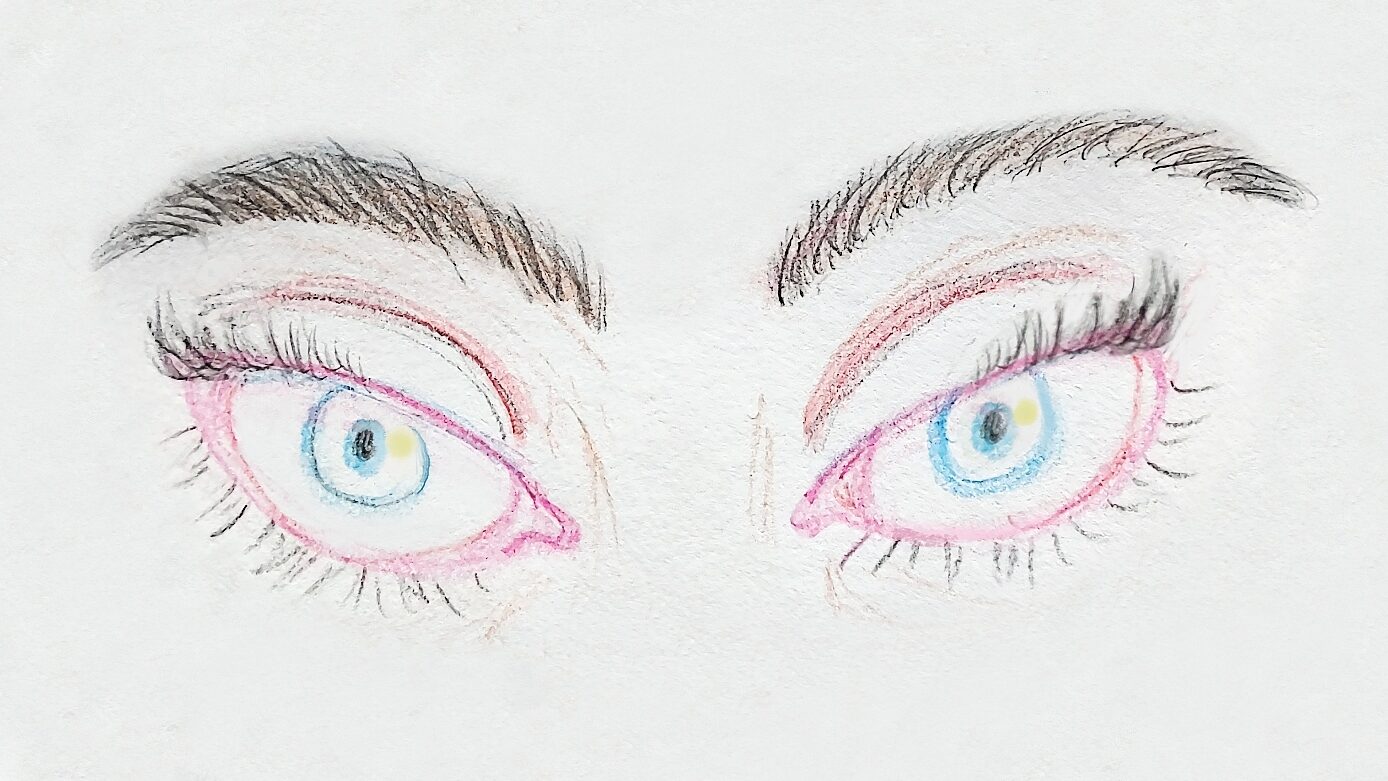
Stage Two: Dissolution
This stage involves the process of freeing oneself from suppressed trauma and past wounds.
“Cassie …” Alan gently nudged her.
She awoke with a start. “Huh …”
“You were moaning in your sleep.”
“Sorry,” she said, rolling away from him. “Go back to sleep.”
“Another nightmare?” Alan asked, caressing her shoulder.
“I can’t remember.” But she did remember.
He knew she wasn’t telling the truth. This had been the fifth, maybe sixth time, her groaning and thrashing had awakened him. Those times he cradled her, and let her stiff limbs soften. The first time it happened he asked her in the morning what she had been dreaming about.
She shrugged. “Oh, I don’t know … the crash … maybe.” She didn’t want to talk about the crash then, and she didn’t want to talk about it now. Especially at two in the morning.
“You don’t have to be tough all the time,” he said. “I know it’s a cop thing.”
Not answering, she pretended to fall back asleep. Alan settled back into the bed.
While Cassie continued to play off the significance of her near-death experience, her subconscious was screaming louder and louder to take notice.
One night, she was in the air following the pursuit of a hit-and-run driver on the 101 freeway going northbound. The chopper’s spotlight was focused on a silver BMW X3, its blazing circle of light exposed a crumpled corner bumper. It weaved erratically in and out of traffic. The driver was either drunk, panicked, or both.
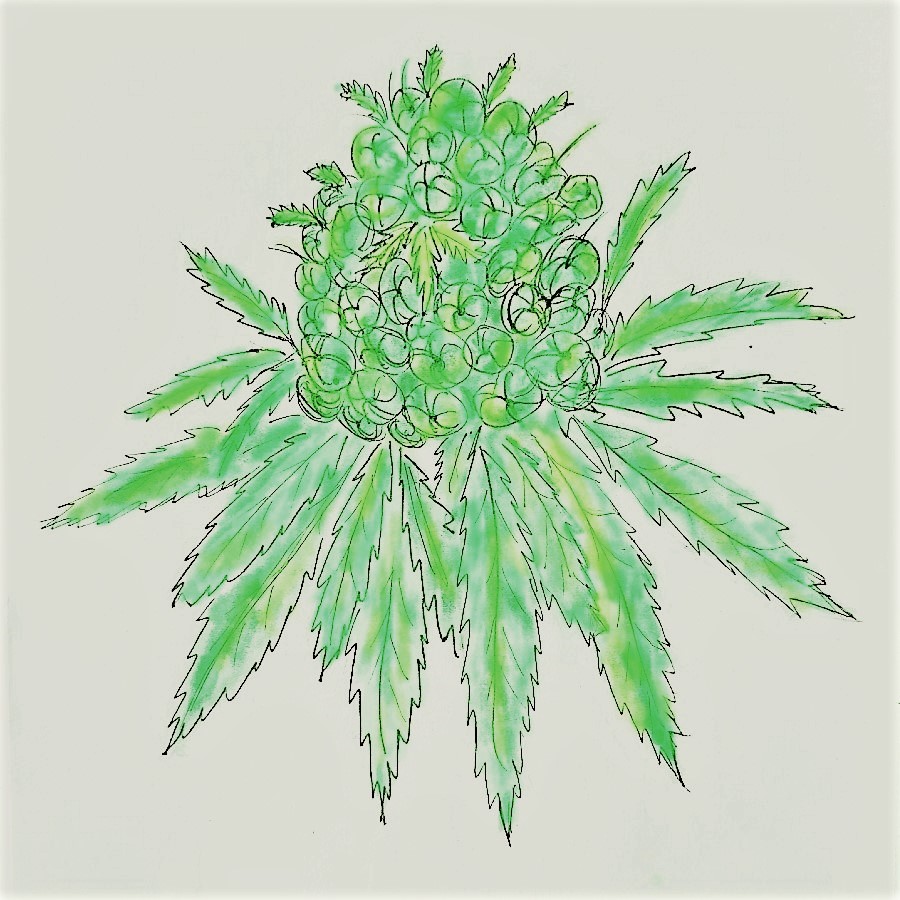
Along the freeway, a billboard emerged from the night’s sky. Two blocky words — Buy Local — surrounded by a wreath of sticky cannabis buds. Cassie squinted at the smaller words in hot pink at the bottom of the signage: Free Delivery.
She started to snicker. Legal weed and free delivery?! What a world, she thought. When a memory flashed before her. She had seen this billboard before elsewhere — the night of the crash. She had clipped it as she wrestled with the spinning chopper for control. Suddenly, her field of vision began to close in, tunneling at the edges. And she felt her chest tightening. Alarm bells blared inside Cassie’s head. She was on the verge of a panic attack. Realizing this, she blinked rapidly to bring her focus back.
Her co-pilot Marc noticed they were starting to veer off course. “What’s up, Cass? You’re losing him.” He looked over at her, saw she was struggling. He wasn’t quite sure with what. “You, okay?”
Cassie steadied her breathing, like she had done so many times before when in fight-or-flight situations. Keep it together, her inner voice repeated over and over. With each breath, she could feel the world coming back to her.
“Want me to take the stick?” Marc was already reaching for the cyclic, the curved lever between his knees, which controlled the chopper.
“I got it,” she said, back in control of herself, and the memory, which had leaked into her waking life. She decisively banked the aircraft and caught up to the BMW, now dead center in the spotlight.
The next morning, Cassie made an appointment with the Dr. Yoshida, the department psychiatrist.
Stage Three: Separation
In order to connect with one’s higher self, one’s false personas and fabricated identities must be shed.
“Alan …”
He finished typing a few words on his laptop and looked up at Cassie. He sat on one end of the couch, she on the other end. Their socked feet comingled in the middle. While she was probably interrupting him, Alan was preparing a talk about therapeutic shamanism for a conference, he showed no signs of impatience. He always gave her his attention when she asked for it. One of the many qualities she loved about him.
“Can I ask you something?”
He shut his laptop, preparing himself for what he could tell would be an involved conversation.
“I’ve been thinking about the separation stage,” she said. “Like you suggested, I’ve been journaling. To help me figure things out. Who I am, what I want.”
“I’ve seen you furiously writing away in that Hello Kitty notebook.”
“I know. It’s childish but I was in Japantown and that’s all they had. Anyway, remember when you said, I don’t have to be tough all that time? Well, you’re right. It’s a cliché. That’s not who I want to be anymore.”
She dropped her gaze and started picking at a small hole, opening on the big toe of her orange and grey striped sock. She needed to distract herself from the wave of vulnerability that swept over her.
“Cassie,” Alan said. He folded his long legs under him and moved toward her. “Who do you want to be?”
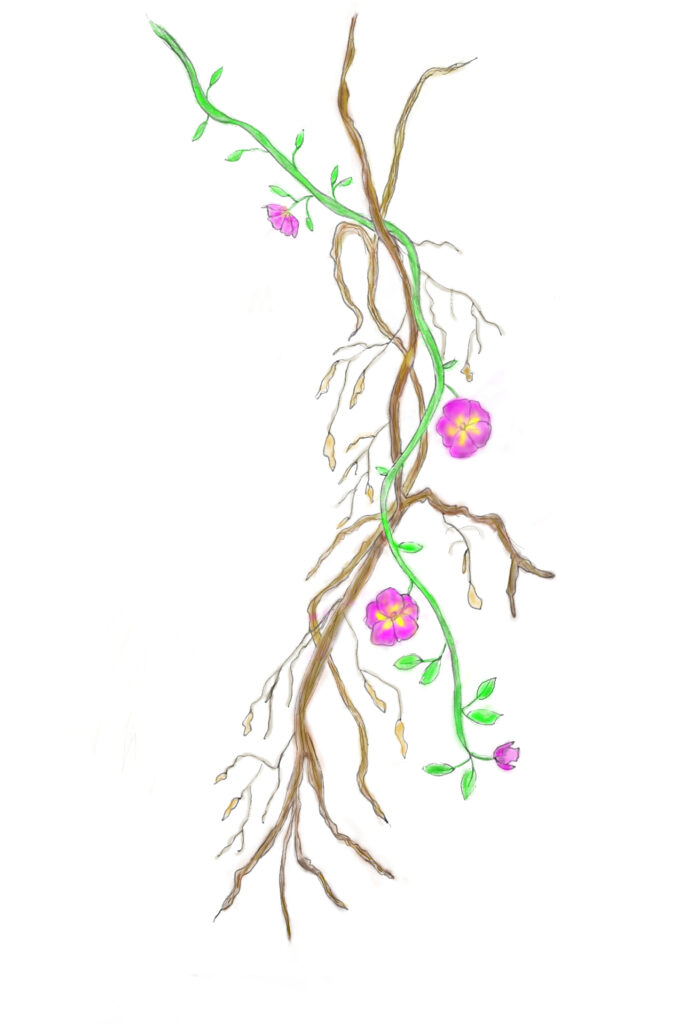
She kept on picking. Her toe began to poke out. She wanted to prolong the moment as long as she could. For she had no idea how he would respond. Once she said “the words,” she and Alan could be over. But she had to say them. In the four months they had been together, if she learned anything about alchemy thus far, she knew she must be honest, to be true to her needs and desires.
She slowly raised her eyes to meet his and said, “I want to be a mother.”
Stage Four: Conjugation
The spiritual process of unifying the body and soul by combining what has so far been revealed about one’s authentic self.
Alan squeezed Cassie so hard she thought she might pass out.
“You’re hurting me,” she squeaked.
“Sorry,” he said, backing off. “Wow, a baby … it’s going to be amazing. I can’t wait.”
She then planted kisses all over his face. “I’m so happy.”
“Me too … and I’m relieved,” he said. “I thought you were going to break up with me.”
She pulled back. “Why on earth would you think that?” This was the first time she had seen a chink in his confidence.
“Because it has happened before.”
“Look at you,” she said, now more bewildered. “You have a successful practice, have a lovely home —”
“— all important things to Angeleno women,” he said with a touch of uncharacteristic sarcasm.
She ignored him. “You’re smart, caring … you’re a good man.” She shook his shoulders for emphasis.
“To some women, I’m a lot … and to others I’m not enough.”
She scrunched up her face. “That’s terrible.”
He shrugged. “Sure, break-ups are unpleasant but I always learn something about myself after. Like … what did I want from that person? What can I be accountable for?”
“So you shifted and elevated your vibration.”
“You, my darling,” he kissed her on the forehead, “are catching on. See … that shift attracted you.” He gently let one of the loose curls framing her face slide between his fingers. “You love me for who I am.”
“Who you are is wonderful.” It was her turn to squeeze the air out of him. He pulled back slightly.
“We need a plan,” Alan said.
“The plan is to have as much sex as possible, starting now.” She quickly straddled him and nuzzled his neck.
He looked upward, mind buzzing with ideas. “Should we move in together? My place is bigger but yours is closer to your work. Oh, Lord and the commute from the Westside to Hollywood will be a daily disaster …”
Suddenly, Cassie slid off him as her amorous feelings faded into the background. “Once I get pregnant, I’d like to quit. Be a stay-at-home mother.”
“But you love your job.” Alan gaped at her. “And you’re making such progress with Dr. Yoshida …”
“Yes, my sessions with him are helping, but I’m also changing. I can’t put my life at risk when there will be another life that depends me. I want to give our baby the best possible chance …” Emotion caught the words in her throat.
He understood and pulled her in close.
Stage Five: Fermentation
One of the more challenging stages. As the higher self begins to emerge, so can lingering aspects of the lower self. Recognizing and ruminating on these qualities, allows for them to ultimately be abandoned.
Cassie sneered to herself as she thumbed through Home Haven’s glossy real estate book. A catalog of premiere listings, in the multimillion-dollar price range, issued monthly from the tony realtor. The images exalted style, aspiration, and wealth … and incited nagging feelings of FOMO, longing, and lack … which she suspected was its intention. Since progressing on her alchemical path, she became steadily more aware of what emotions the culture’s focus on material attachments inspired in her and in so many others.
She tossed the hefty publication aside. “I think you’re getting ahead of things. We’ve been trying for over three months, and I’m still not pregnant. I never thought having so much sex could be so frustrating.”
“It’s going to happen.”
This did not mollify her.
“In the meantime, we have to keep moving forward with the logistics,” Alan said.
Logistics. The fourth time he had said the term, one mostly used for large scale military and manufacturing operations. She had been counting. The hyperbolic way he characterized their lives had started to test her patience.
Alan pulled a sheaf of real estate listings from a yellow plastic sleeve. She eyed it with venom. He organized all his papers with specific color coding. Yellow stood for “things that make us happy.” Talking about buying a house together, did not make Cassie happy.
His penchant for micro details added to her growing displeasure. Lately, all he could talk about was the housing market, interest rates, and top performing school districts. When he unfurled a map of Los Angeles County that covered the entire dining tabletop — to show her neighborhood crime trends — a poisonous emotion, deep in the recesses of her psyche, exploded into her consciousness. You are so annoying. Sure, Cassie liked to plan, make a to-do list here and there, but all this overthinking. How had she not known this about Alan? … Before she designated him as the father of their currently non-existent baby?
Immediately, her negative thoughts shifted to shame and remorse. I suck, I’m a horrible human being, she chastised. How could she think these things about Alan who was so caring and trustworthy, and who only wanted vibrations to thrum at maximum positivity? Where were her low vibrations coming from anyway? She thought she had been making progress.
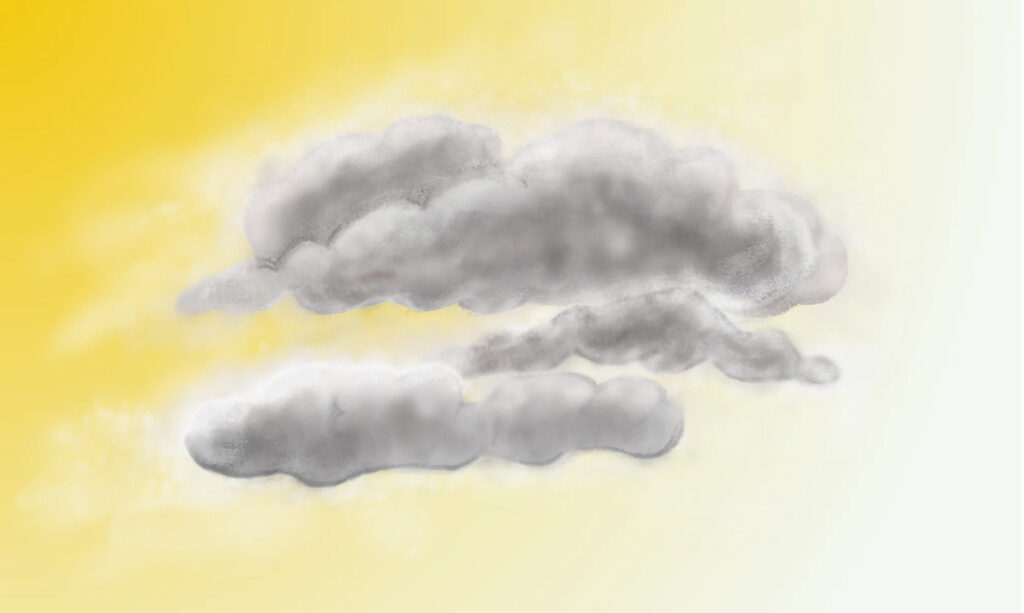
Cassie closed her eyes and took in a breath. A slow exhale released the dark clouds in her mind. As she opened them, she saw Alan putting the listings back into the sleeve. “We can do this another time. You don’t seem that into it right now.”
“I am,” she said, nodding with extra conviction and a smile. “Let’s get logistical.” She reached for the happy yellow sleeve and began to look through it.
Stage Six: Distillation
At this stage, one’s true essence emerges in pure balance and harmony as the lower self or shadow self is assimilated into the higher self.
Her car keys in hand, Cassie headed to her Yukon in the department parking lot. Marc yelled at her from a few cars over.
“Hey, Cass, we’re all meeting up at Mama Shelter for drinks. You should come.”
It had been an uneventful shift; the city had been uncharacteristically quiet. She didn’t feel the least bit tired. Alan was sleeping at his own place that night so the late evening was all her own.
Already suspecting she would decline, Marc cajoled, “C’mon, you never come out anymore. What’s wrong with you?”
Good question. It had been seven months, and she still was not pregnant. All efforts to create the light inside of her as she moved through the steps of transformation had not paid off. What was the point of doing something … or anything if there was no pot of gold at the end of it? Couldn’t she at least reward herself now for her efforts?
Besides she hadn’t had a drink this whole time … maybe she could just tag along for the fun of it. Have a sparkling water with lemon, perhaps? Yeah, she could already hear the razzing she’d get from her colleagues. Then it occurred to her how much she missed the camaraderie of her police brethren. She’d been so swallowed up in her Alan cocoon of support, love, and open houses. It would be good to mix things up. She needed this. She deserved this.
“Ok, twist my arm,” she said. “See you there.”
Cassie pulled her SUV to the curb across the street from the bar, located on the fifth-floor rooftop of a boutiquey hotel in Hollywood. Instead of cutting the engine, she looked up at the globe lights circling the perimeter of the venue like a twinkling necklace. She could already hear boisterous male laughter, echoing into the night.
Just one beer, she negotiated with herself. But she already knew where this path would lead, having been down it many times before. One beer would lead to another, and another. At night’s end, she would wind up having sloppy sex in someone’s bed. Most likely that someone would be the hot new guy from Narco. She had noticed him checking her out on more than one occasion as they passed each other at the station. She had already clocked his parked pick-up truck when she turned onto Selma. No, she decided, shaking the darkness out of her head. This brief lapse would only make the light more difficult to come by. She must stay true.
She glanced back up at the roof, then shifted into gear and sped off.
Stage Seven: Coagulation
In this final stage, one’s true and higher essence emerges as the mind, body and spirit have become one.
Cassie wandered around the house as her eyes took quick snapshots of the expansive living, kitchen and dining areas, all merged into one. Textured glass pendant lights hung over the kitchen’s marble island, and the zellege tile backsplash — a soothing watery aqua — contrasted with the gleaming gold fixtures and bright white everything throughout the space. She moved to the multiple bi-folding doors, which had been opened to better showcase the panoramic view of the ocean. She felt the sea air on her face and wondered if she lived here, would she eventually get tired of the vista? … If one day she’d simply stop seeing and acknowledging its majesty?
“I know what you’re thinking,” said Alan, joining her. “You love it, right?”
Before she could answer he took her hand and led her to a bedroom through an airy hallway. It too had a spectacular view.
“This would make a good home office,” she said.
“I’m thinking that’s the room out front.” He pointed in a vague direction behind her. “This could be the nursery.”
Suddenly, Cassie felt a flutter inside of her and her hand instinctively touched her belly. “She heard us talking about her.”
Alan leaned down and spoke to her womb. “What do you think, baby girl? You like this room?”
Cassie cringed. She hated it when Alan did that and as her belly grew larger, he did it even more. She moved away and pretended to look at the vaulted ceilings. “It’s a nice room. But God, all this white. We’d have to paint.”
“Whatever you want,” he said.
No, she already had what she wanted. After a year and a half of trying and one miscarriage, the light was finally growing inside of her.
Alan wanted the baby too … but he also really wanted this house by the ocean. While she would have been more than happy to stay in her Craftsman-style bungalow with its scuffed hardwood floors and pitifully small closets. When she floated the idea by him — “Why don’t you move in here instead?” — he looked horrified, like she had suggested they live in a tent under the Harbor freeway. She never brought it up again.
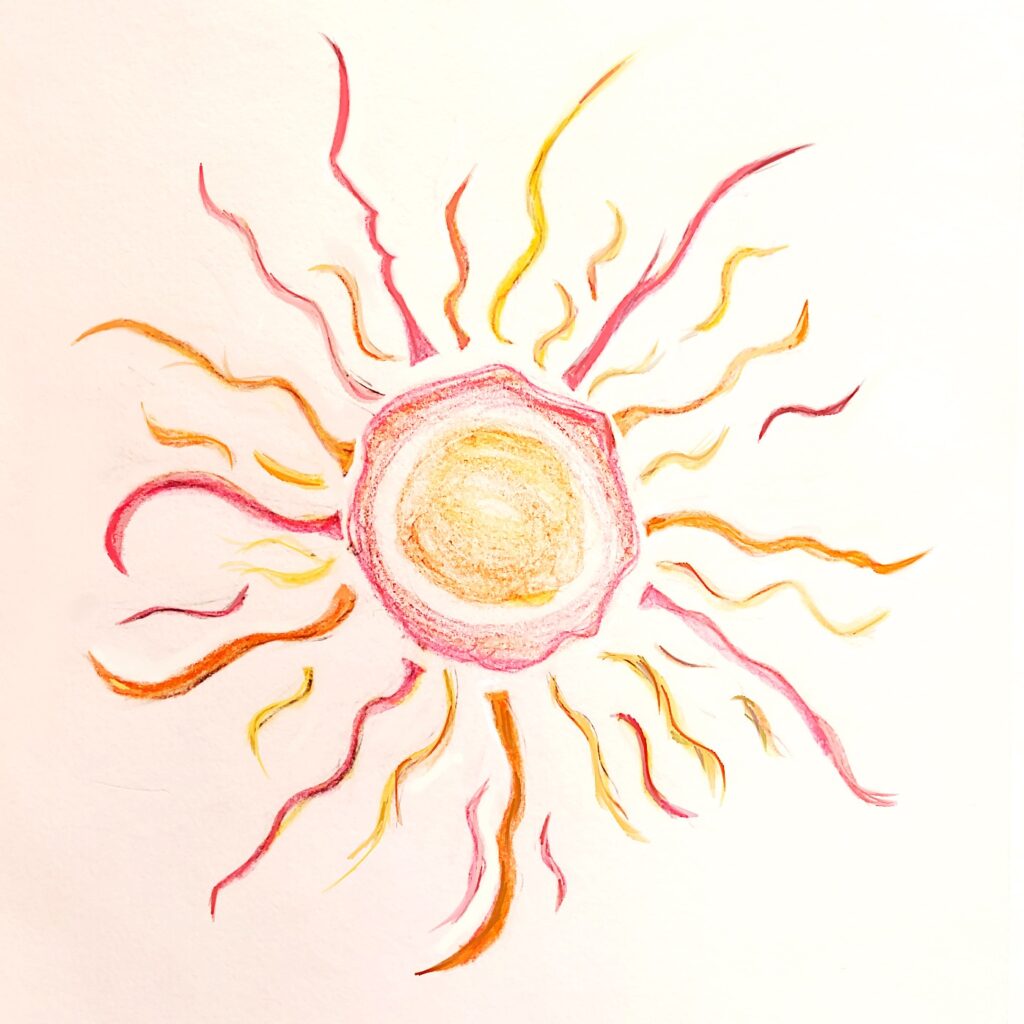
Cassie knew the score: to sustain and protect this light she would have to shift her priorities. So right then and there, surrounded by the blinding walls and ceilings more suitable for giants, she made a pact with herself. No longer would she focus on Alan’s annoying quirks — like the “therapist’s voice” he fell into whenever providing unsolicited advice — but the life inside of her, nurturing it with as much care and love as she could muster. And how could she do that if she allowed those dark thoughts to consume her, to impede the way?
“Let’s make an offer,” Cassie said.
Alan practically leapt out of his skin. “Shall we offer list or overbid?” he said, scrolling through his cell phone for the number of their realtor. Not waiting for her answer, and phone pressed to his ear, he left the room to engage in what she presumed would be a lengthy discussion about negotiating tactics.
The sound of crashing waves drew her attention back to the view. Looking out, her thoughts drifted to Alan. He must have made a similar agreement with himself … about her. He had recognized and accepted her foibles, long before she saw them in herself: her initial reluctance to address her PTSD; her impatience; her single-minded behavior, often bordering on obsessiveness; and her uncanny ability to kick off her shoes and leave them scattered throughout both of their abodes. Well, he had been at this longer than she had. Then she fondly remembered what he told her on their first date: “The best part about being a modern alchemist is helping turn others’ lives into gold.”
She came back into the living area. Alan was still on the phone, intently listening. He noticed her entrance, and gave her an assuring thumbs up.
Things will be different now, she thought. Everything will be perfect. She laughed to herself. Only a fool would think so.
◊ ◊ ◊
Drawings created using colored pencil, pen, crayon and digital illustration tools.
